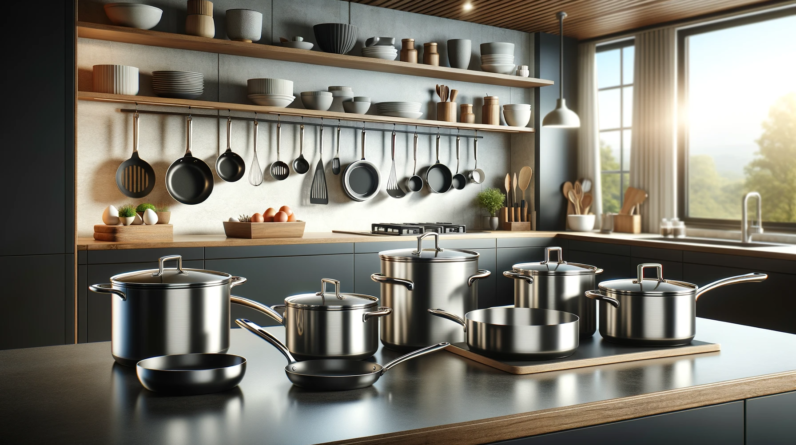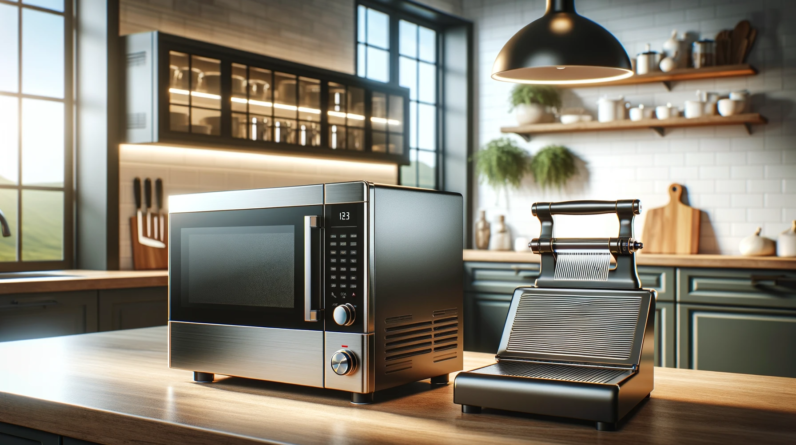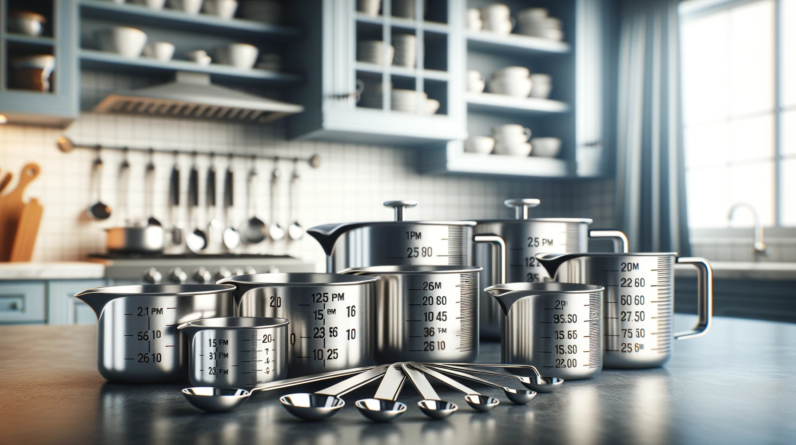
Disclaimer: This post may contain affiliate links. As an Amazon Associate, we earn from qualifying purchases.
You’re standing in your kitchen, ready to whip up a delicious meal, but have you ever stopped to think about the impact your cooking utensils may have on your health? From spatulas to pots and pans, the type of utensils you choose can make a big difference in the quality of your food and overall well-being.
In this post, we’ll explore the world of cooking utensils and discover which ones are the healthiest options for you and your family.
Ceramic Cookware
Benefits of Ceramic Cookware
Ceramic cookware has gained popularity in recent years due to its numerous health benefits. One of the main advantages of using ceramic cookware is that it is non-reactive, meaning it doesn’t release any harmful chemicals or toxins into your food when heated. This makes it a safe option for cooking and food preparation.
Additionally, ceramic cookware is also known for its excellent heat distribution. It distributes heat evenly across the surface, ensuring that your food cooks uniformly. This can result in better flavors and more consistent cooking results.
Another benefit of ceramic cookware is its non-stick properties. Most ceramic cookware is coated with a layer of non-stick material, making it easier to cook with and clean up afterwards. This reduces the need for excess oil or butter, making your meals healthier.
Disadvantages of Ceramic Cookware
 While ceramic cookware offers many benefits, it does come with a few disadvantages. One of the main concerns with ceramic cookware is its fragility. It tends to be more delicate compared to other materials, which means it can chip, crack, or break if not handled with care.
While ceramic cookware offers many benefits, it does come with a few disadvantages. One of the main concerns with ceramic cookware is its fragility. It tends to be more delicate compared to other materials, which means it can chip, crack, or break if not handled with care.
It is important to avoid sudden changes in temperature, such as placing a hot pan in cold water, as this can cause the ceramic to crack.
Another disadvantage of ceramic cookware is its tendency to stain. Over time, certain foods, like tomato-based sauces, can leave stubborn stains on the surface of the cookware.
While these stains don’t affect the performance of the cookware, they can be difficult to remove and may impact the aesthetics.
How to Choose and Use Ceramic Cookware
When choosing ceramic cookware, it is important to consider the quality and durability of the product. Look for cookware made with high-quality ceramic materials that have a reputation for durability. Additionally, check if the cookware is made with a non-toxic and safe ceramic coating.
To properly use ceramic cookware, it is recommended to follow the manufacturer’s instructions. Avoid using metal utensils, as they can scratch or damage the ceramic coating. Instead, opt for silicone, plastic, or wooden utensils to protect the surface.
To ensure the longevity of your ceramic cookware, it is important to clean and store it properly. Avoid using harsh abrasives or scrubbing pads that can damage the coating. Handwashing with a mild detergent and non-abrasive sponge is usually sufficient.
Additionally, make sure the cookware is completely dry before storing to prevent moisture from causing any damage.
Cast Iron Cookware
Benefits of Cast Iron Cookware
Cast iron cookware has been used for centuries and is known for its durability and excellent heat retention. One of the main benefits of using cast iron cookware is its ability to evenly distribute heat, making it ideal for slow cooking and braising.
Another advantage of cast iron cookware is that it adds a small amount of iron to your food. This can be beneficial, especially for individuals who have low iron levels or are at risk of iron deficiency. However, it is important to note that the amount of iron absorbed from cast iron cookware is relatively small and may not significantly impact iron levels.
Cast iron cookware also offers a natural non-stick surface when properly seasoned. The seasoning process involves coating the surface with a layer of oil and heating it to create a protective layer that prevents food from sticking. This non-stick surface can make cooking and cleaning easier.
Disadvantages of Cast Iron Cookware
 While cast iron cookware has many benefits, it does have a few disadvantages that may deter some users. One of the main drawbacks is its weight. Cast iron cookware can be quite heavy, which can make it difficult to handle, especially for individuals with physical limitations.
While cast iron cookware has many benefits, it does have a few disadvantages that may deter some users. One of the main drawbacks is its weight. Cast iron cookware can be quite heavy, which can make it difficult to handle, especially for individuals with physical limitations.
Another disadvantage is that cast iron cookware requires regular maintenance to keep it in good condition.
This includes proper seasoning, as well as avoiding the use of certain acidic or alkaline foods that can strip away the seasoning layer.
Additionally, cast iron cookware is not dishwasher safe and should be hand washed and dried thoroughly.
How to Season and Maintain Cast Iron Cookware
To season cast iron cookware, start by washing it with warm soapy water to remove any dirt or debris. Once dry, rub a thin layer of oil (such as vegetable oil or flaxseed oil) all over the cooking surface and outside of the cookware. Place the cookware upside down on the middle rack of a preheated oven and bake at a high temperature (usually around 400-450°F) for about an hour.
This process will create a protective layer that prevents food from sticking and helps to maintain the cookware’s non-stick properties.
To maintain cast iron cookware, avoid using harsh detergents or scrubbing pads that can strip away the seasoning. Instead, use a non-abrasive sponge or brush and gently clean the surface with warm water. After cleaning, make sure to thoroughly dry the cookware to prevent any moisture from causing rust.





